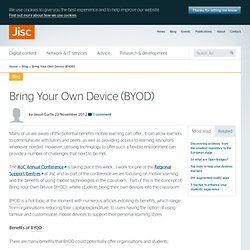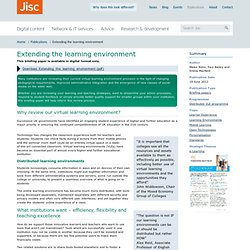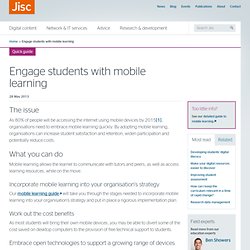

Disruptive technology. You can’t ignore BYOD and hope it will go away. Companies need to deal with the reality of BYOD, because it’s coming whether they like it or not News | CIOL Bureau ENGLAND, UK: With the news that more than 40 percent of companies do not consider the 'bring your own device' (BYOD) trend to be on their agenda, IT and communications industry experts are warning that sooner or later they will have to face up to BYOD, whether they want to or not.

BYOD describes the growing trend among employees to use their own IT resources - laptops, netbooks, smartphones, tablets and other mobile devices for work purposes, both in the office and while out and about or working from home. A report by ChannelWeb.co.uk says that in addition to the 40% that don't have BYOD on their agenda, 34 percent of respondents felt apathetic or had ‘mixed feelings' about the concept of BYOD. Only a quarter were positive about BYOD and said that their employer had embraced the idea.
Bring Your Own Device (BYOD) Many of us are aware of the potential benefits mobile learning can offer.

It can allow learners to communicate with tutors and peers, as well as providing access to learning resources whenever needed. However, utilising technology to offer such a flexible environment can provide a number of challenges that need to be met. The AoC Annual Conference is taking place this week. I work for one of the Regional Support Centres at Jisc and as part of the conference we are focusing on mobile learning and the benefits of using mobile technologies in the classroom. Part of this is the concept of Bring Your Own Device (BYOD), where students being their own devices into the classroom. BYOD is a hot topic at the moment with numerous articles extolling its benefits, which range from organisations reducing their capital expenditure, to users having the option of using familiar and customisable mobile devices to support their personal learning styles.
Extending the learning environment. This briefing paper is available in digital format only.

Download_Extending_the_learning_environment (pdf)1 Many institutions are reviewing their current virtual learning environment provision in the light of changing pedagogical requirements, improved administrative integration and the emergence of new classes of social media on the wider web. Whether you are reviewing your learning and teaching strategies, want to streamline your admin processes, respond to student feedback or simply provide better quality support for smaller groups within your institution, this briefing paper will help inform this review process. Why review our virtual learning environment? Successive UK governments have identified an engaging student experience of higher and further education as a major priority in ensuring the continued competitiveness of UK education in the 21st century. Technology has changed the classroom experience both for teachers and students. Distributed learning environments What next? Glossary.
Engage students with mobile learning. The issue As 80% of people will be accessing the internet using mobile devices by 2015, organisations need to embrace mobile learning quickly.

By adopting mobile learning, organisations can increase student satisfaction and retention, widen participation and potentially reduce costs. What you can do Mobile learning allows the learner to communicate with tutors and peers, as well as access learning resources, while on the move. JISC Inform / Issue 35, Winter 2012. Utilising BYOD helps with safeguarding and the teaching of digital literacy. In Colin’s example, finding answers online raises issues of referencing and reliability of information that he can then explore with his learners, as sometimes his learners find different answers. It provides a more real-world experience for the learner, teaching skills that will benefit them after they have left the learning provider. Colin concedes there are some issues of status around who has the most up to date phone but he doesn’t believe that is a reason to not use it.
“Am I going to stop someone using a laptop to make notes because others use pen and paper? The person using paper is doing it in a different way. BYOD Toolkit (1 May 2013) Jisc Legal has published a BYOD toolkit in response to the rise in learners and employees using their personal computing devices (typically smart phones and tablets) in the work and learning environment.

The toolkit includes a variety of resources: 1. Your Staff, Mobile Devices, Law and Liability To some extent bring your own device (BYOD) is already happening in your institution. Staff are already using their mobile devices to access their work emails, papers and documents from off campus. 2. Students will increasingly expect that all information and services currently available from a university or college desktop will be available to them via their mobile device. 3.